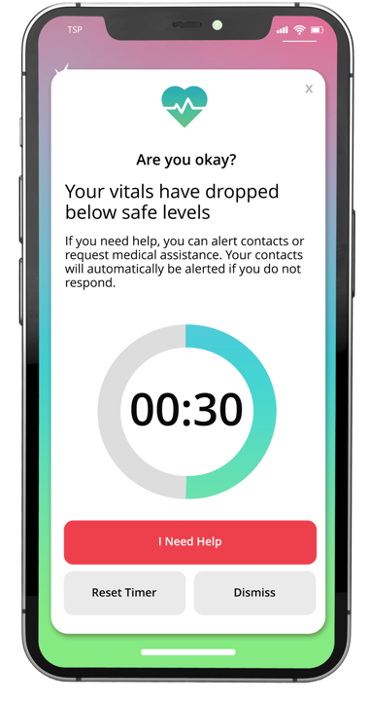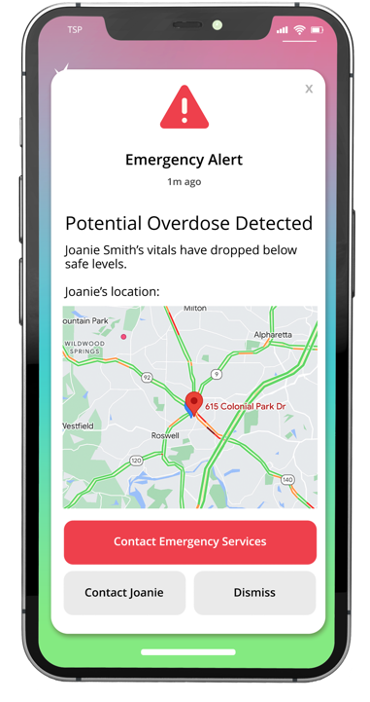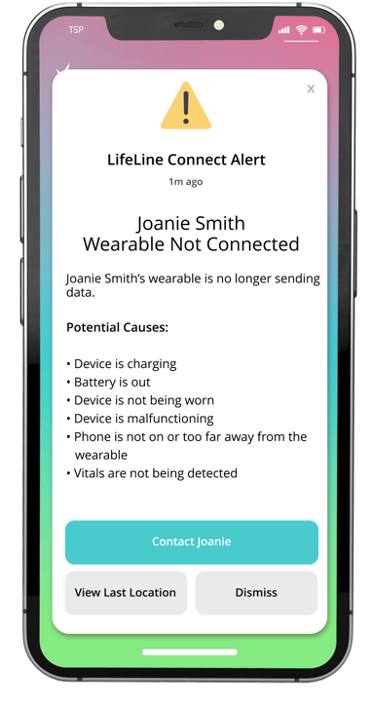LifeLine Connect Overdose Detection, Alert & Response
Coming Soon!
Detecting an Overdose with LifeLine Connect
Wearables
45.9 million people in the US use a smartwatch, while 39.5 million use a fitness tracker. Those wearables track your steps, but they also collect data on your heart and respiration rate along with blood oxygen level, the key indicators of overdose if they go outside the range of normal
Mobile App
Pair your fitness tracker or smart watch with the LifeLine mobile application to start sending your vitals to the LifeLine portal and alerting system. Data is received every few minutes to detect the leading indicators of overdose, alert contacts and direct help.
The LifeLine Connect Alert System

Are You OK?
If vitals are at an unacceptable level, it reaches out to determine if you are OK and asks for a response.


Alert the Team
The emergency contacts will be alerted if potential overdose is detected with the person's location.


Data Not Received
The contact list will receive a notification
if data is not being received.

Signs of an Overdose

Heart rate slows or stops during overdose
Opioids taken in large amounts can interfere with receptors between the brain and heart, causing the heart rate to slow down or even stop. As breathing slows, oxygen levels fall, which may trigger abnormal heart rhythms.

Opioids can deprive the brain of oxygen
Oxygen flow becomes limited and permanent brain damage can occur within only four minutes of oxygen deprivation. Opioid overdose can cause seizures, which may further damage the brain. Permanent brain damage can leave people paralyzed or unable to speak

Opioids slow breathing which can be fatal.
Opioid overdoses can slow the person's breathing which can be fatal. It can cause pulmonary edema, a fluid leak that fills up the air spaces of the lungs where he person may be unable to swallow or spit, which can lead to choking or vomiting

